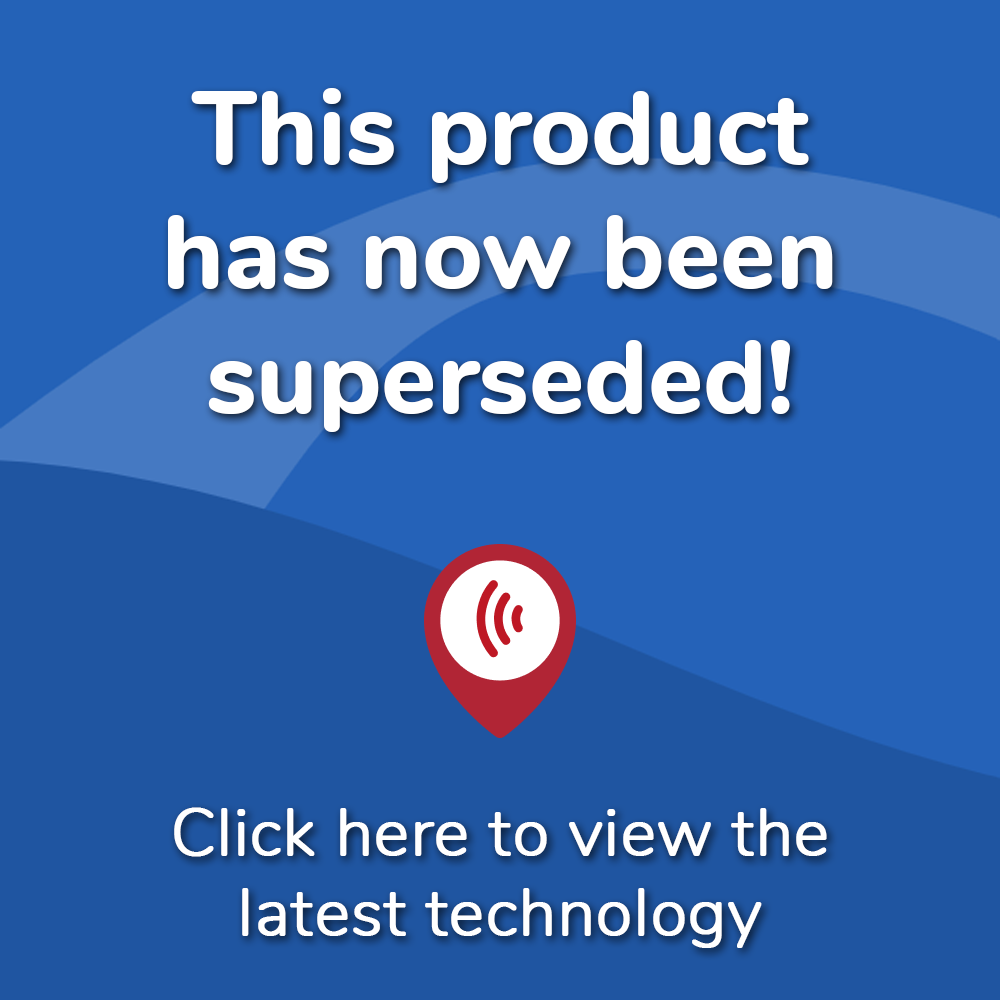WARNING DISCONTINUED Newer Phonak Models Available

What's included in our hearing aid prices?
Details & Features
Phonak Marvel M90 Hearing Aids
Phonak Audeo Marvel M90 Hearing Aids Including - M 312 / M 312T / M 13T / M R / M RT / Naida / Virto Black
2024 Update: The Marvel is now discontinued. Do not buy old technology, view the latest Phonak hearing aids here
May 2020 Update: Phonak launched an updated Naida and another addition to their famous Marvel family - the Virto Black. A new custom-made ITE hearing aid including Marvel technology, innovative Bluetooth streaming and seamless hands-free calls. Read more information below.
Phonak Marvel M90 Hearing Aid's Connectivity
For years they have been lagging behind the other manufacturers with regard to streaming technology. Most other manufacturers have brought out “made for iPhone” hearing aids, which have been very popular, however, Android users have always been left behind.
Last year Phonak brought out the B-Direct which was, in my opinion, a half-hearted attempt to bridge the gap, resulting in a hearing aid that didn’t know what it was. Sacrificing functionality to add some very basic Android smartphone compatibility.
We can forget about all of that now, Phonak have redeemed themselves. The Phonak Marvel seems to offer the best connectivity out of any hearing aid on the market now. Any Bluetooth device, whether it be a smartphone, computer, etc can be streamed to the hearing aids, in stereo.
Most importantly, in my opinion, you no longer need to hold the phone near to your mouth! The Phonak Marvel has built-in microphones to pick up your voice so that you can hold a phone conversation through your hearing aids, without ever taking your phone out of your pocket. This to me is a far more intuitive option and I’m surprised that none of the other manufacturers of the Made for iPhone hearing aids has done this yet.
Sound quality has been much improved for streaming. Commonly people found previous Phonak hearing aids a bit on the tinny side when streaming audio. Now the sound is much richer and more natural.
There is also a satnav feature within the aid. I personally use a maps app on my phone, I hadn't particularly noticed before that the phone reads out the directions as you go. I tend to just follow the line. It was a bit of a surprise when the voice appeared in my hearing aids. This wasn't especially useful for me, but if you have trouble hearing directions then it could be.
It doesn’t eat your battery either. Even using streaming, the new Lithium-Ion rechargeable battery will keep going for 24 hours on average, and importantly the battery will last 6 years before needing to be changed, compared to the 4 years maximum that the previous generation, the Phonak Belong, would last.
Phonak Marvel M90 Hearing Aids - What's new?
Yes, there is a but. As per usual, Phonak has focused on one particular area with their hearing aid development, and this focus has brought about great results. However, the improvements to hearing in background noise, commonly the most important thing that hearing aid wearers are looking for, have still not significantly improved since the previous generation of aids.
Yes, they have a new operating system (Autosense upgraded from version 2 to version 3) that has somewhat improved other areas of the hearing aid, however, there has been no major overhaul of the overall hearing aid functionality since the Phonak Venture came out in early 2015.
Main Features of the Phonak Marvel M90 Hearing Aids
Here are the technical specs so that you can compare the various models (see charts below). The Phonak Marvel currently comes only in the Audeo shape, of which there are five variations. These being:
- Audéo M-312 – This is the model that takes the standard 312 battery. This is the slimmest and most discreet option.
- Audéo M-312T – Same as the above but slightly larger as it has a telecoil
- Audéo M-13T – Also has a telecoil but uses the larger size 13 battery
- Audéo M-R – This is the rechargeable option, a little chunky, but likely to be the most popular option.
- Audéo M-RT – Same as the rechargeable, but slightly larger again due to the added telecoil.
Phonak Marvel M90 Hearing Aids - In Conclusion
At the time of writing, this aid is the best option for Bluetooth streaming and is still sufficiently good as a hearing aid to be more than adequate for the hearing needs of most people. I enjoyed my time wearing these aids and am happy to recommend them. To find out if they would suit you, book an assessment with one of our audiologists either in one of our many clinics or in your own home.
Need more support with Phonak Audeo Marvel M90 Hearing Aids?
Call us free on 0800 567 7621 to speak with one of our audiologists about the Phonak Marvel hearing aid range and what it could do for you and your hearing. You can also read about Phonak Virto Black M90 hearing aids further down the page.
Read our audiologist's review of this range ►Phonak Marvel Hearing Aid Review
►Click here to go to the top of the page
Other technology levels in this range:
►Phonak Marvel M70 hearing aids
►Phonak Marvel M50 hearing aids
►Phonak Marvel M30 hearing aids
**Please note, there will be an additional surcharge of £125 if we are pairing a single hearing aid with an existing aid bought from another company where we are taking over the aftercare responsibilities and looking after both hearing aids**
Paul Harrison is an audiology expert at Hearing Aid UK, with over 20 years of audiology experience and a member of the British Society of Hearing Aid Audiologists Council (BSHAA) between 2015 - 2020.
Phonak Marvel M90 Hearing Aids Information
Click on the buttons below to discover moreWatch the Phonak Marvel hearing aids video below
Phonak Virto Marvel M90 Hearing Aids
Information about Phonak Virto Black M90 Hearing Aids
Introducing the Phonak Virto Marvel M90 Hearing Aids
A stylish black design with a hint of the modern hearable - created to challenge the stigmas that are still attached to hearing aids and the hope that this design may improve current statistics of people who seek hearing loss treatment early.
Styles Include:
- Phonak Virto M 10 NW O - Size 10A battery.
- Phonak Virto M 312 NW O - Size 312 battery.
- Phonak Virto M 312 - Size 312 battery.
Main features at a glance:
- Bluetooth Classic
- Bluetooth LE
- Binaural Voice Stream Technology
- Airstream Technology
- Roger capability
Main Benefits of Phonak Virto Marvel M90 Hearing Aids
- Clear, rich sound: Better speech understanding with less listening effort in challenging hearing situations.
- Great connectivity: Phonak Virto Black hearing aids connect directly and seamlessly to both iOS and Android smartphones, and Bluetooth devices and you can also benefit from hands-free calls. Answer, end and reject calls at a touch of your hearing aids.
- Bespoke hearing: With over 1600 data points in these devices - Biometric Calibration uses your unique ear anatomy to custom-make your hearing aid. Enabling you to wear with confidence knowing you'll be comfortable and your devices will be discreet.
- Stylish: A new black and hearable-style modern design.
Our specialist service includes:
Do not spend hundreds of pounds without getting a second opinion from us.
Please call us on 0800 567 7621
 Not only are the prices great, but the service is fantastic! Many thanks to your team.
Not only are the prices great, but the service is fantastic! Many thanks to your team.Other pages you might find useful
What's included in our hearing aid prices?
If you are looking at this page then it is likely that an audiologist has suggested that you purchase this particular hearing aid, so is this the best model for you?
In general, any audiologist will always recommend to you the model that best suits your needs. Here is a useful checklist to make sure that is the case.
- Audiologist level of knowledge: The audiologist you have seen will hopefully have a wide knowledge of all available hearing aids, however, some will only be familiar with a small number of brands and therefore may not really be in a position to know which model is the best for you. It is OK to challenge their recommendation and ask them to justify why this particular brand is the one for you.
- Do research: Read about the hearing aid that was recommended. Does it seem like it will suit your lifestyle? Does it have more or fewer features than you need?
- Be aware of sales targets: Many high street retailers have specific tie-ins to a particular manufacturer/brand. The hearing aid they have suggested may still be the correct one for you, but do your research so that you know why they might have recommended it.
If in doubt, feel free to give us a call. That's what we're here for. In the meantime, read all about our review of the best hearing aids for 2025 here
If you have significant hearing loss in both ears, you should be wearing two hearing aids. Here are the audiological reasons why:
Localisation: The brain decodes information from both ears and compares and contrasts them. By analysing the minuscule time delays as well as the difference in the loudness of each sound reaching the ears, the person is able to accurately locate a sound source. Simply put, if you have better hearing on one side than the other, you can't accurately tell what direction sounds are coming from.
Less amplification is required: A phenomenon known as “binaural summation” means that the hearing aids can be set at a lower and more natural volume setting than if you wore only one hearing aid.
Head shadow effect: High frequencies, the part of your hearing that gives clarity and meaning to speech sounds, cannot bend around your head. Only low frequencies can. Therefore if someone is talking on your unaided side you are likely to hear that they are speaking, but be unable to tell what they have said.
Noise reduction: The brain has its own built-in noise reduction which is only really effective when it is receiving information from both ears. If only one ear is aided, even with the best hearing aid in the world, it will be difficult for you to hear in background noise as your brain is trying to retain all of the sounds (including background noise) rather than filtering it out.
Sound quality: We are designed to hear in stereo. Only hearing from one side sounds a lot less natural to us.
Fancy some further reading on this topic? You can read about why two hearing aids are better than one in our article, hearing aids for both ears, here
For most people, the main benefit of a rechargeable hearing aid is simple convenience. We are used to plugging in our phones and other devices overnight for them to charge up. Here are some other pros and cons:
For anybody with poor dexterity or issues with their fingers, having a rechargeable aid makes a huge difference as normal hearing aid batteries are quite small and some people find them fiddly to change.
One downside is that if you forget to charge your hearing aid, then it is a problem that can't be instantly fixed. For most a 30-minute charge will get you at least two or three hours of hearing, but if you are the type of person who is likely to forget to plug them in regularly then you're probably better off with standard batteries.
Rechargeable aids are also a little bit bigger and are only available in Behind the Ear models.
Finally, just like with a mobile phone, the amount of charge you get on day one is not going to be the same as you get a few years down the line. Be sure to ask what the policy is with the manufacturer warranty when it comes to replacing the battery.
Looking for more information on rechargeable hearing aids? Read our dedicated page on the topic here
For most people, the answer is yes. But it's never that simple.
The majority of hearing problems affect the high frequencies a lot more than the low ones. Therefore open fitting hearing aids sound a lot more natural and ones that block your ears up can make your own voice sound like you are talking with your head in a bucket. Therefore in-ear aids tend to be less natural.
However the true answer is we can't tell until we have had a look in your ears to assess the size of your ear canal, and until we have tested your hearing to see which frequencies are being affected.
People with wider ear canals tend to have more flexibility, also there are open fitting modular CIC hearing aids now that do not block your ears.
There is also the age old rule to consider, that a hearing aid will not help you if it's sat in the drawer gathering dust. If the only hearing aid you would be happy wearing is one that people can't see, then that's what you should get.
Most people can adapt to any type of hearing aid, as long as they know what to expect. Have an honest conversation with your audiologist as to what your needs are.
Generally speaking, six or more. Unless it's none at all.
The number of channels a hearing aid has is often a simplistic way an audiologist will use to explain why one hearing aid is better than another, but channels are complex and it is really not that straightforward. Here are some reasons why:
Hearing aids amplify sounds of different frequencies by different amounts. Most people have lost more high frequencies than low and therefore need more amplification in the high frequencies. The range of sounds you hear are split into frequency bands or channels and the hearing aids are set to provide the right amount of hearing at each frequency level.
Less than six channels and this cannot be done with much accuracy, so six is the magic number. However, a six channel aid is typically very basic with few other features and is suitable only for hearing a single speaker in a quiet room. The number of channels is not what you should be looking at, it's more the rest of the technology that comes with them.
As a final note, different manufacturers have different approaches. One method is not necessarily better than any other. For example, some manufacturers have as many as 64 channels in their top aids. Most tend to have between 17 and 20. One manufacturer has no channels at all.
Hearing aids are easily lost, misplaced or damaged and typically are one of the most expensive personal possessions an individual can own. We offer hearing aid warranty coverage for £80 per year per aid. Find out more about this service we provide here
All our audiologists use the very latest technology and provide the full range of tests to accurately measure your hearing for free. Find out about what hearing healthcare services we offer all our customers here
Hearing Aid UK offers all their customers free home visiting services, even in a care home environment, for no extra cost. Including hearing tests, fittings, maintenance, check-ups and much more in the comfort of your own home and at your convenience. Find out more information about our home visits here
Here, at Hearing Aid UK, we are dedicated to offering low hearing aid prices. We achieve this by having no head office and low marketing costs. Our hearing aid prices are amongst the lowest you will find anywhere in the world. Explore our prices, brands, and models here
Other Models
Ask the Experts
6 Morton Lane
Walkwood
Redditch
Worcestershire
B97 5QA
Latest Launch
When we refer to a product as 'Latest Launch', we mean it is the latest to be released on the market.
New
When we refer to a product as 'New', we mean that the product is the newest hearing aid model on the market.
When we refer to a product as 'Superseded', we mean that there is a newer range available which replaces and improves on this product.
Older Model
When we refer to a product as an 'Older Model', we mean that it is has been superseded by at least two more recent hearing aid ranges.



